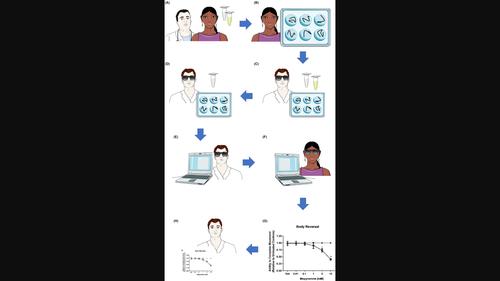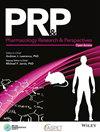Co-created in vivo pharmacology practical classes using the novel organism Lumbriculus variegatus
IF 2.9
4区 医学
Q2 PHARMACOLOGY & PHARMACY
引用次数: 0
Abstract
Co-creation within higher education emphasizes learner empowerment to promote collaboration between the students and staff, enabling students to become active participants in their learning process and the construction of resources with academic staff. Concurrently, a diminishing number of higher education institutions offer in vivo practical classes, resulting in an in vivo skills shortage. To address this, and to actively engage students in their own learning, we describe the co-creation of a student-led drug trial using Lumbriculus variegatus. Under blinded conditions, final-year undergraduate biomedical science students, under the tutelage of academic staff and fellow students, were involved in the co-creation of an in vivo practical class to determine the effects of histamine and histamine receptor inverse agonists mepyramine and loratadine. Throughout this process, undergraduate- and masters-level students played key roles in every aspect of practical delivery and data analysis. Herein, students demonstrated the test compounds, both in isolation and in combination, resulted in reduced stereotypical movements of L. variegatus (p < .05, n ≥ 6). 15% of students in the class responded to a feedback survey (n = 8) after the class. Students reported the class provided “real life” insights into in vivo research and enabled the development of hands-on skills which would be useful in applying in their future careers. All students reported that they enjoyed the class with 25% (n = 2) reporting concerns about animal use in research, enabling useful discussions about animals in research. Moreover, these student-led in vivo trials add to the pharmacological knowledge of L. variegatus promoting education-led research.

利用新型生物 Lumbriculus variegatus 共同创建体内药理学实践课程
高等教育中的 "共同创造 "强调赋予学习者权力,促进学生与教职员工之间的合作,使学生成为学习过程的积极参与者,并与教职员工共同建设资源。与此同时,越来越多的高等教育机构开设了活体实践课程,导致活体技能短缺。为了解决这个问题,并让学生积极参与到自己的学习中,我们介绍了如何利用变色龙(Lumbriculus variegatus)共同创建一个由学生主导的药物试验。在盲法条件下,生物医学科学专业的应届本科生在学术人员和同学的指导下,参与了共同创建的体内实践课,以确定组胺和组胺受体反向激动剂甲吡胺和氯雷他定的作用。在整个过程中,本科生和硕士生在实践教学和数据分析的各个方面都发挥了关键作用。在此,学生们证明了试验化合物单独使用和混合使用都能减少变尾蜥的刻板动作(p < .05, n ≥ 6)。15%的学生在课后回复了反馈调查(n = 8)。学生们表示,这堂课让他们对体内研究有了 "真实 "的了解,并培养了他们的动手能力,这对他们未来的职业生涯很有帮助。所有学生都表示很喜欢这门课,只有 25% 的学生(n = 2)表示对研究中使用动物的问题感到担忧,从而对研究中的动物问题进行了有益的讨论。此外,这些由学生主导的体内试验增加了对变种枸橘的药理学知识,促进了以教育为主导的研究。
本文章由计算机程序翻译,如有差异,请以英文原文为准。
求助全文
约1分钟内获得全文
求助全文
来源期刊

Pharmacology Research & Perspectives
Pharmacology, Toxicology and Pharmaceutics-General Pharmacology, Toxicology and Pharmaceutics
CiteScore
5.30
自引率
3.80%
发文量
120
审稿时长
20 weeks
期刊介绍:
PR&P is jointly published by the American Society for Pharmacology and Experimental Therapeutics (ASPET), the British Pharmacological Society (BPS), and Wiley. PR&P is a bi-monthly open access journal that publishes a range of article types, including: target validation (preclinical papers that show a hypothesis is incorrect or papers on drugs that have failed in early clinical development); drug discovery reviews (strategy, hypotheses, and data resulting in a successful therapeutic drug); frontiers in translational medicine (drug and target validation for an unmet therapeutic need); pharmacological hypotheses (reviews that are oriented to inform a novel hypothesis); and replication studies (work that refutes key findings [failed replication] and work that validates key findings). PR&P publishes papers submitted directly to the journal and those referred from the journals of ASPET and the BPS
 求助内容:
求助内容: 应助结果提醒方式:
应助结果提醒方式:


